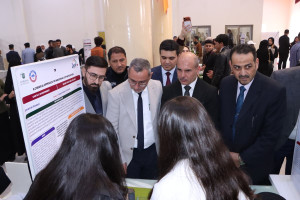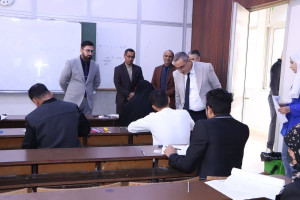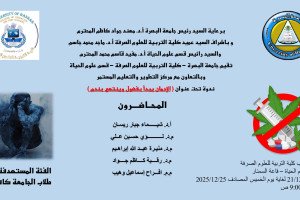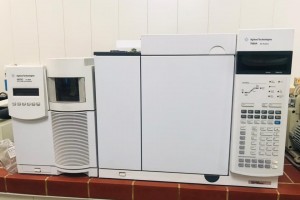
The College of Education for Pure Sciences, Department of Chemistry, discussed a master’s thesis on the preparation, diagnosis, and applied study of some twin-surface activators.
The message submitted by the researcher (Sajjad Odeh Kreidi) included:
Preparation of four different types of twin surfactants with different separations (Hydroquinone) and (4-aminopyridine), which were prepared with two types of separation (1-bromooctane) and (1-bromododecane).
These compounds were identified by FT-IR
and proton nuclear magnetic resonance (H-NMR) spectroscopy.
The validity of this composition of the compounds was confirmed, and four dispersions were prepared with a ratio of (20:80) and different concentrations (20, 30, 40) ppm, and the efficiency of the prepared compounds was evaluated by calculating the value of the critical colloidal concentration (CMC) and calculating the value (HLB), and then testing the work of the dispersion in the laboratory, where it was Prepare a test dish containing 25 ml of water and 10 microliters of crude oil and add the dispersant to the mixture after the mixture has settled in the dish and observe the efficiency of the work of the dispersant on the emulsion. The study proved that the prepared activator with a flexible separator such as pyridine is more efficient than the activator with a rigid separator such as the benzene ring. Likewise, the Increasing the length of the hydrocarbon chain increases the efficiency of the activator, so the compound prepared from the 4-aminopyridine separator with the hydrocarbon chain 1-bromododecane is the most efficient.








